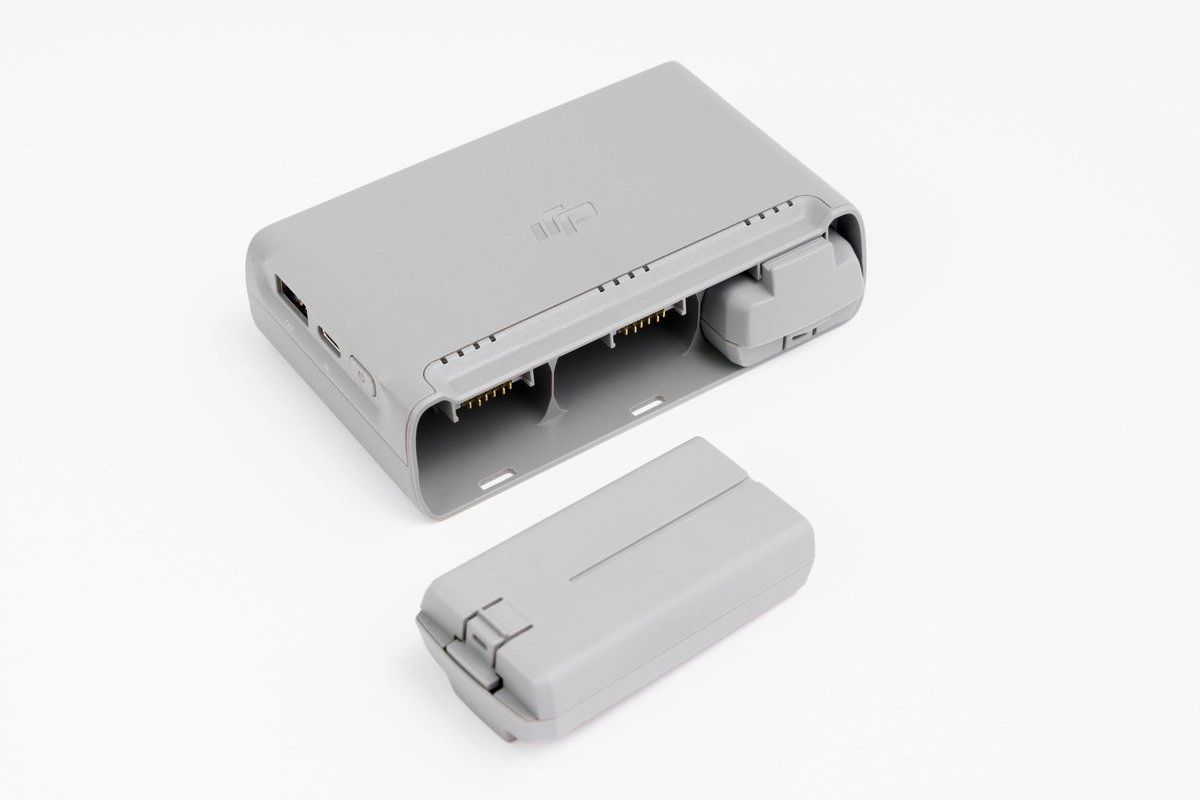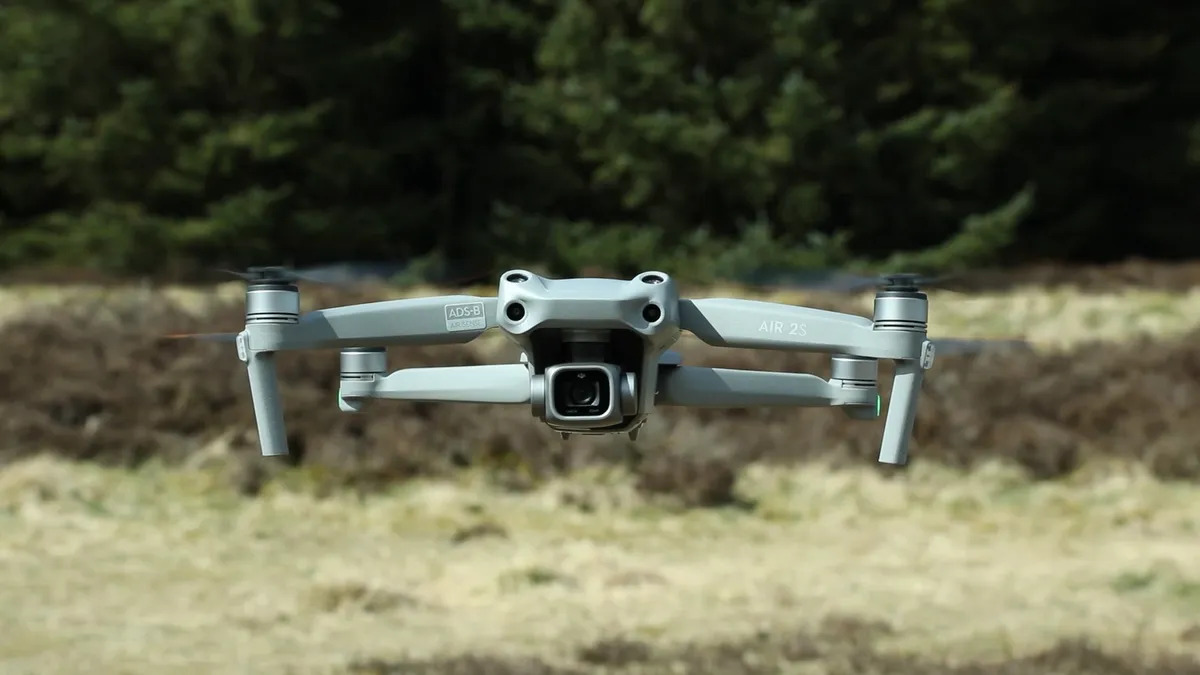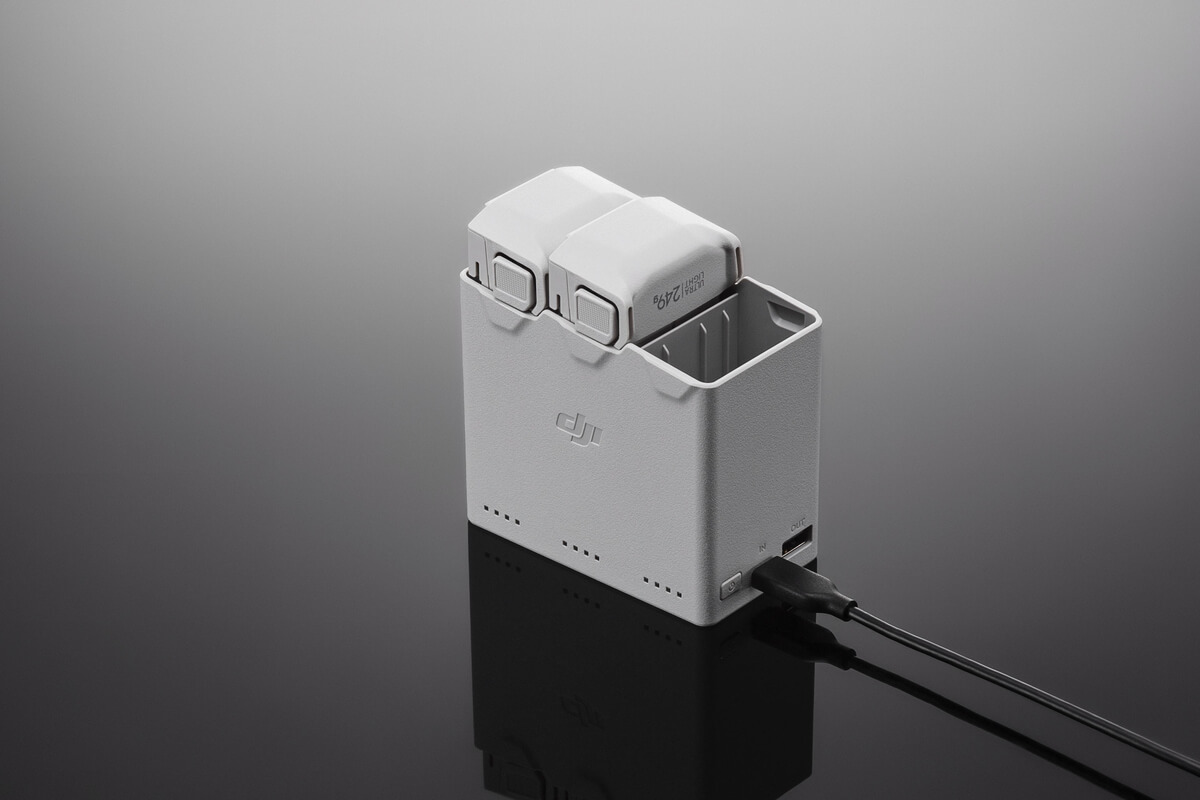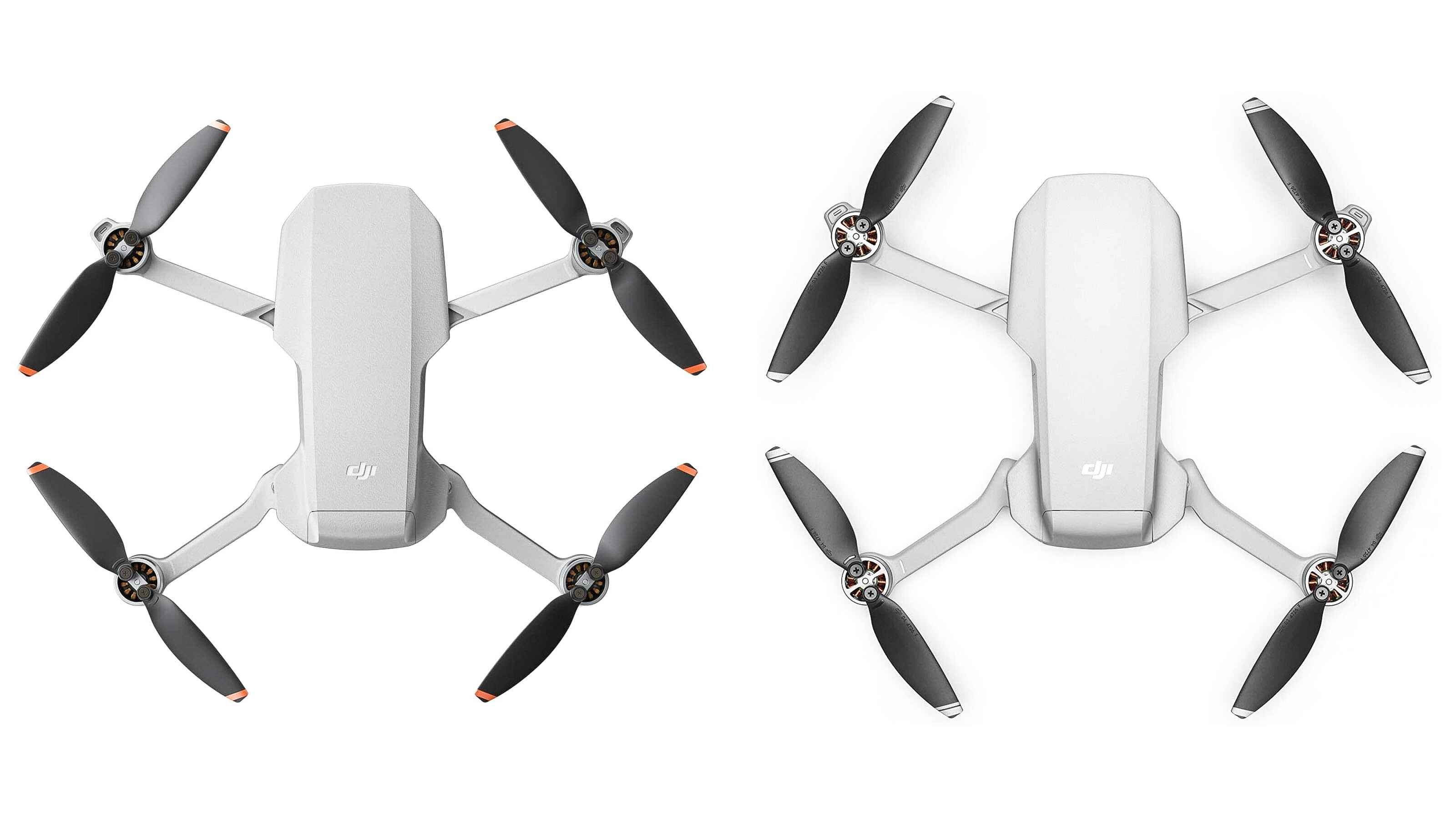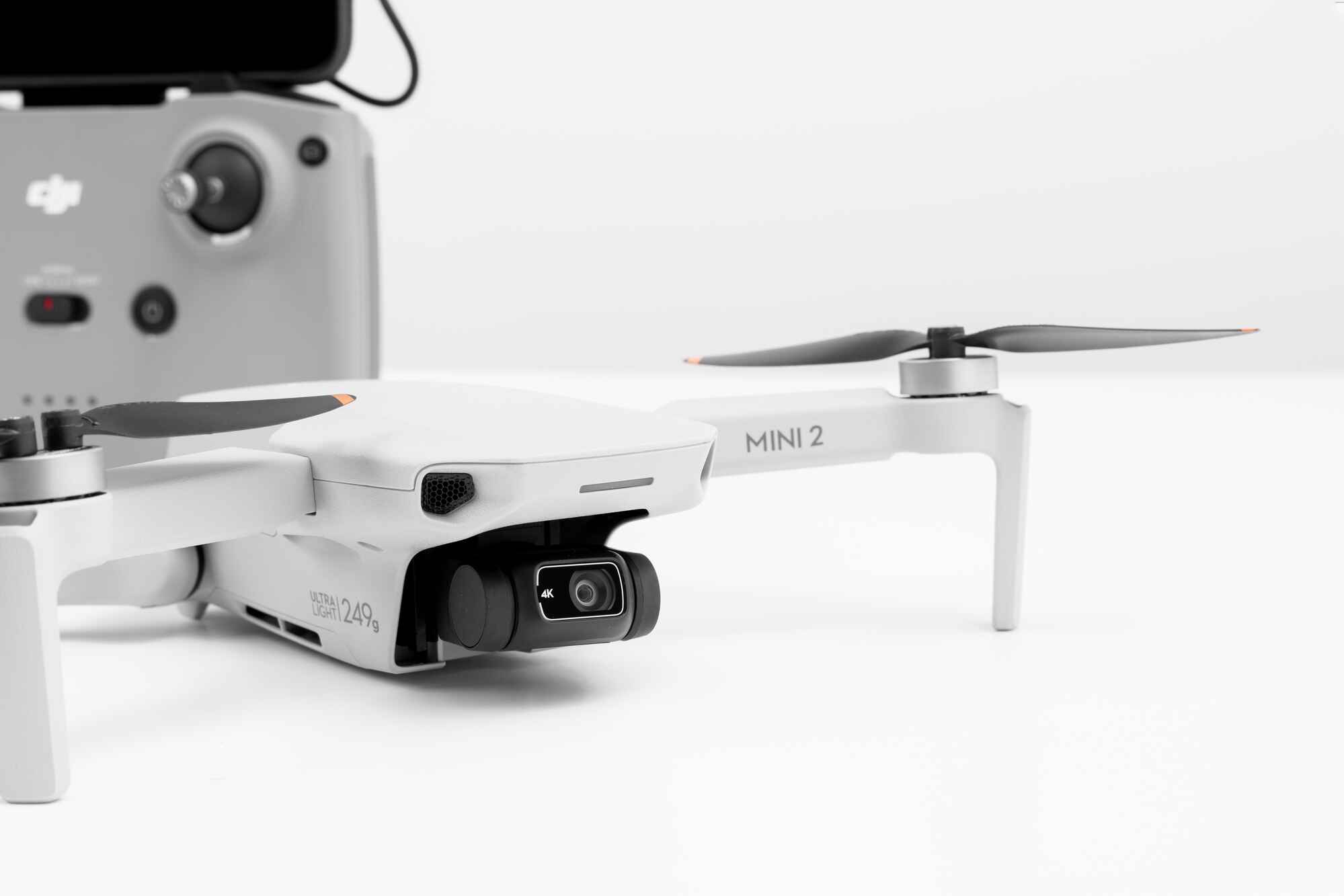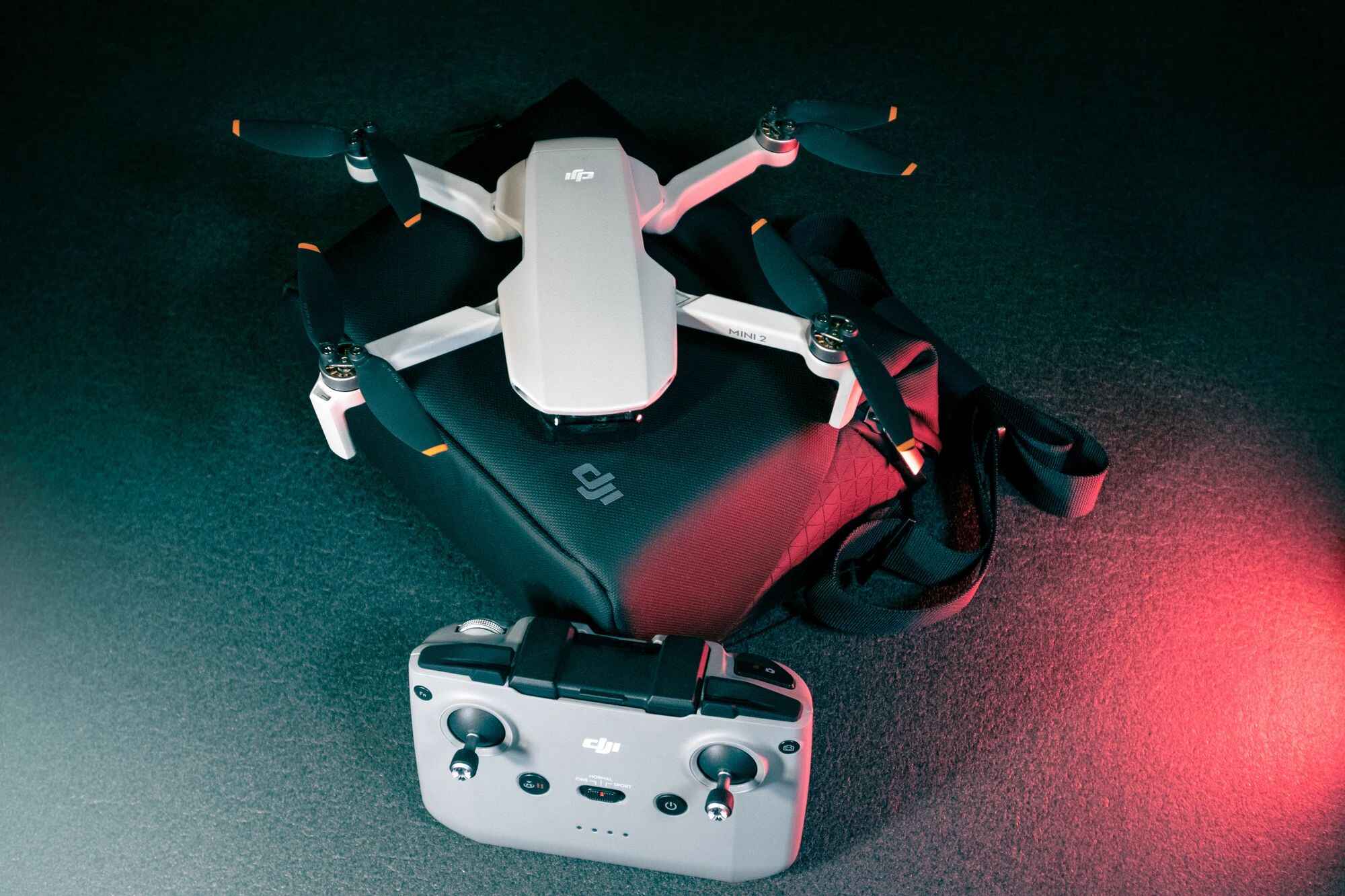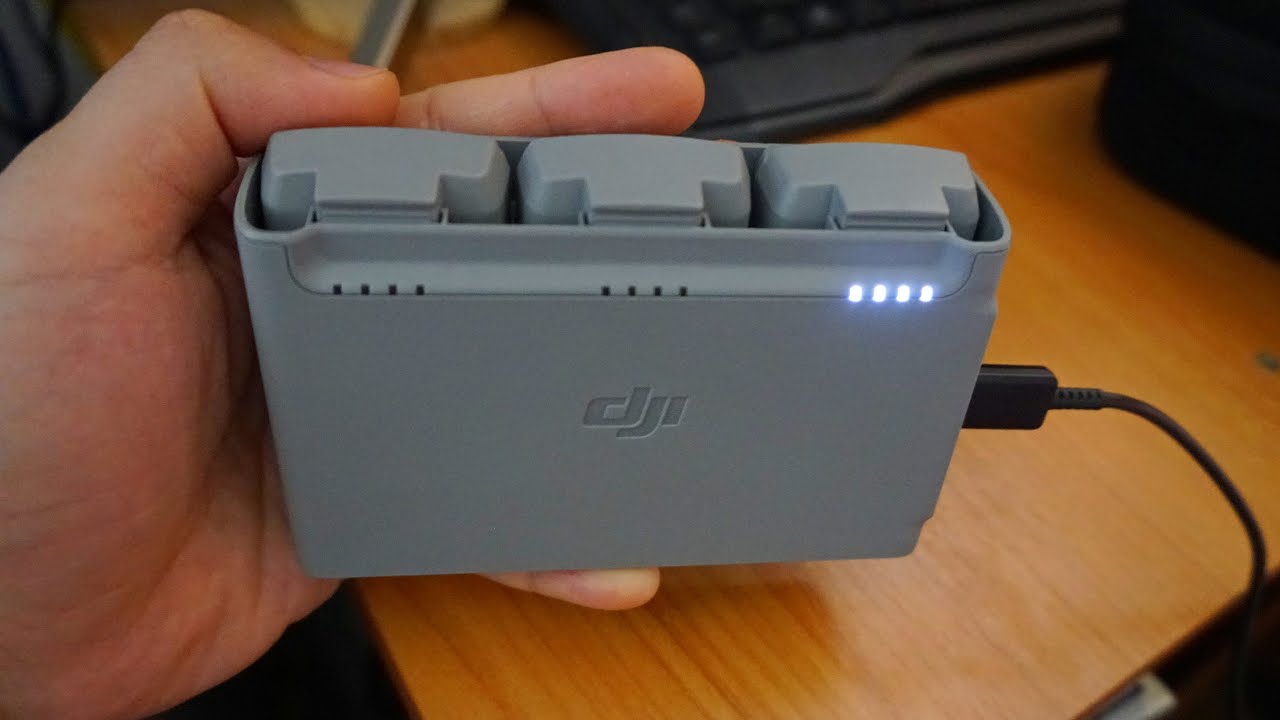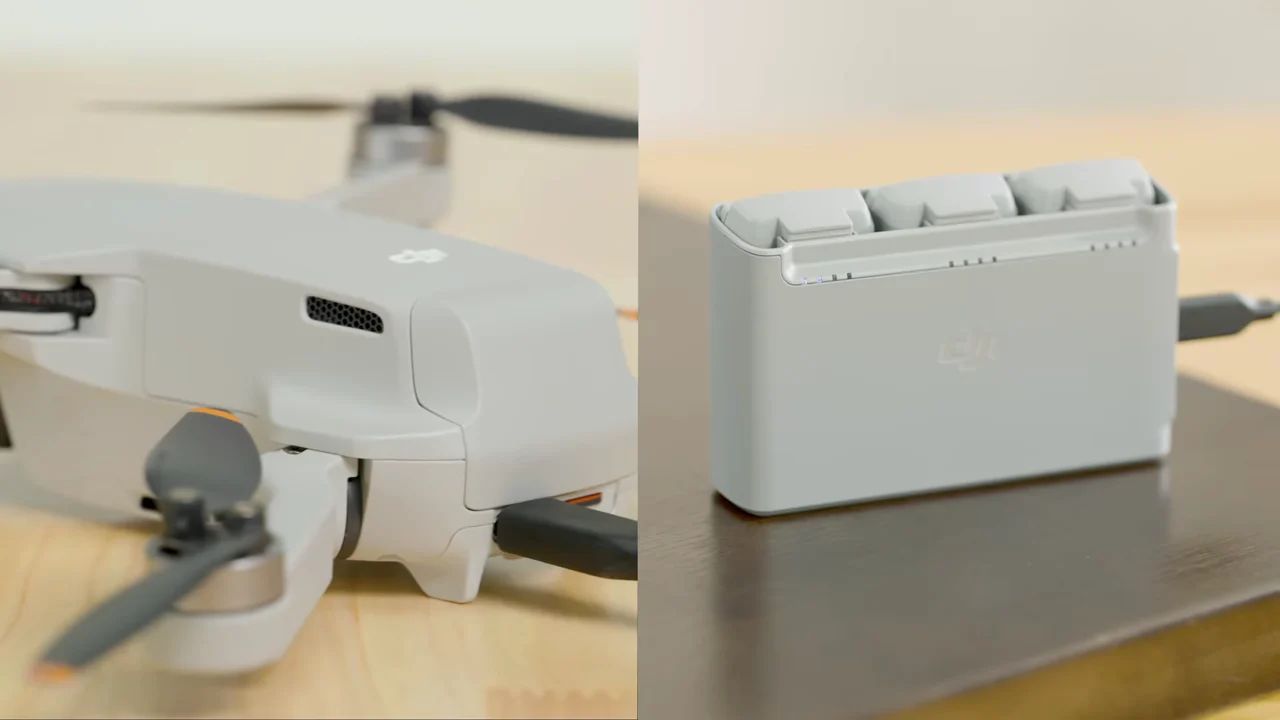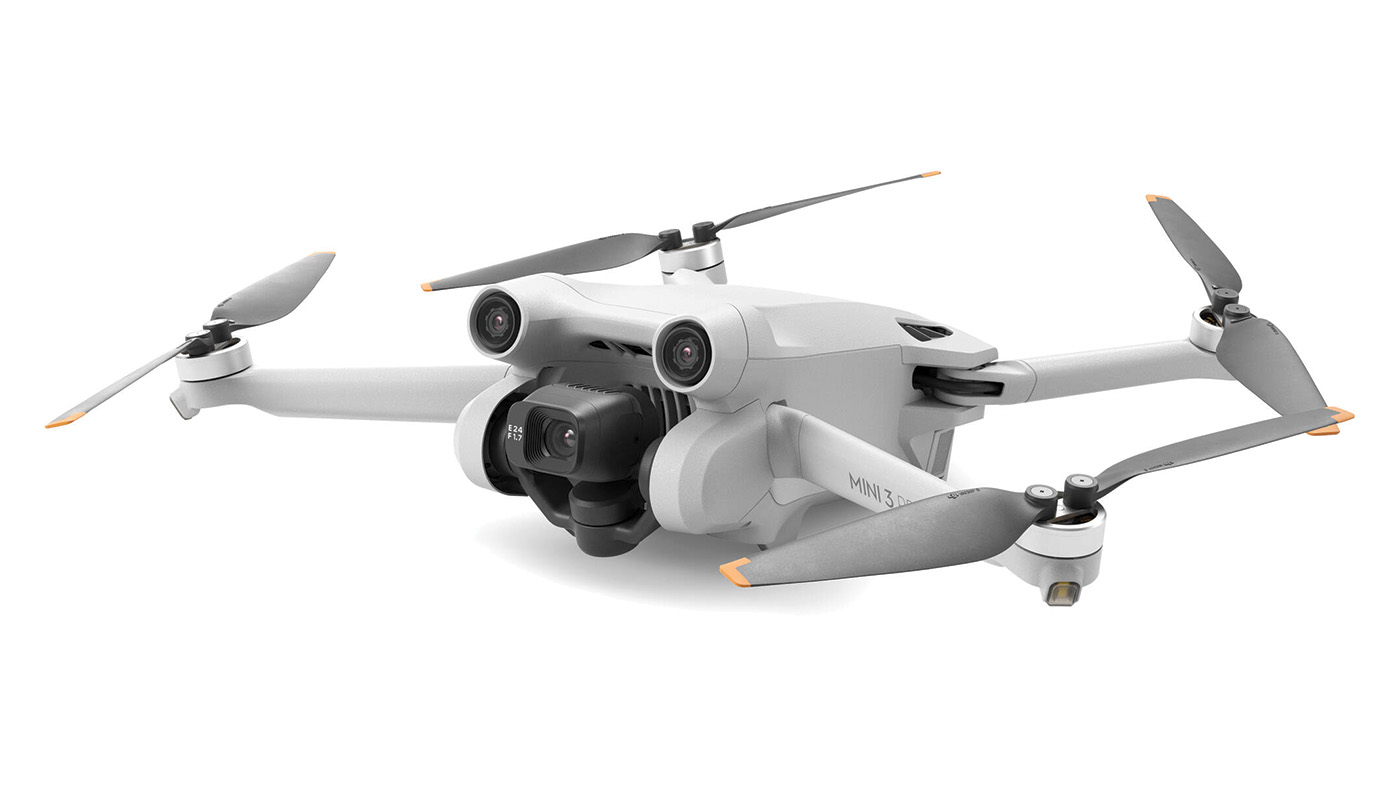Introduction
Welcome to our guide on the battery life of the DJI Mini 2. If you’re a proud owner of this compact and powerful drone, you’ve probably wondered how long its battery can last during your flight sessions. Understanding the battery life of your drone is crucial for planning your flights and capturing all the breathtaking aerial shots you desire.
In this article, we’ll dive into the various factors that can affect the battery life of the DJI Mini 2, explore its battery specifications, and provide you with some tips to maximize its performance. Whether you’re a seasoned drone pilot or just beginning your aerial photography journey, this guide will help you make the most out of your DJI Mini 2’s battery.
Before we delve into the specifics, it’s worth mentioning that the DJI Mini 2 is equipped with an intelligent lithium-polymer (LiPo) battery. These batteries provide a lightweight power source that can deliver high performance. However, like all batteries, their performance can be influenced by several external and internal factors.
Stay tuned as we take a closer look at these factors and provide you with insights on how to optimize your DJI Mini 2’s battery life. Whether you’re flying recreationally or using your drone for professional purposes, understanding the battery life of your DJI Mini 2 is essential for a successful and enjoyable aerial photography experience.
Factors Affecting Battery Life
Several factors can influence the battery life of your DJI Mini 2. By understanding these factors, you can make informed decisions and adjust your flying habits to maximize the time you have in the air. Let’s take a look at some of the key factors that can impact your DJI Mini 2’s battery life:
- Flight Time: The duration of your flight directly affects the battery life. The longer you fly, the more power the drone consumes. Keep in mind that the official flight time advertised by DJI is an approximation under ideal conditions, and your actual flight time may vary.
- Wind Speed: Windy conditions can significantly impact your battery life. When flying against a strong headwind, the drone has to exert more power to maintain its position and move forward. This increased power consumption can quickly drain the battery. Conversely, flying with a tailwind can prolong your battery life.
- Flight Mode: Different flight modes on the DJI Mini 2 consume varying amounts of battery power. In general, flying in Sport mode, which allows for faster speeds and more agile maneuvers, will drain the battery faster than flying in Normal mode. Be mindful of the flight mode you are using and its impact on battery life.
- Temperature: Extreme temperatures, both hot and cold, can affect the performance of the DJI Mini 2’s battery. LiPo batteries are sensitive to temperature fluctuations. Flying in hot weather can cause the battery to heat up, while cold weather can decrease the battery’s overall performance. It is recommended to fly in moderate temperatures to optimize battery life.
- Flight Style: Your flight style and the actions you perform during your flight can also impact the battery life. Rapid acceleration, deceleration, and frequent changes in direction will consume more power than smooth, steady flights. Avoid excessive maneuvers if you want to preserve your battery life.
By considering these factors and adjusting your flying habits accordingly, you can extend the battery life of your DJI Mini 2 and get the most out of your flights. In the following sections, we will explore the specific battery specifications of the DJI Mini 2 and provide tips on how to optimize its performance.
DJI Mini 2 Battery Specifications
The DJI Mini 2 is powered by a high-quality intelligent lithium-polymer (LiPo) battery designed specifically for this drone. Understanding the battery specifications is essential for optimizing its performance and estimating flight time. Let’s take a look at the key battery specifications of the DJI Mini 2:
- Battery Type: The DJI Mini 2 is equipped with a specifically designed LiPo battery that provides a lightweight power source with high discharge rates. These batteries are known for their energy efficiency and long cycle life.
- Battery Capacity: The DJI Mini 2’s battery has a capacity of 2250mAh. This indicates the amount of energy it can store, which directly affects the flight time. Higher battery capacity generally means longer flight time, but other factors, such as wind conditions and flight mode, can also impact the actual flight time.
- Voltage: The DJI Mini 2’s battery operates at a voltage of 7.7V. This voltage is optimized to provide the necessary power for the drone’s motors and other components while ensuring the overall efficiency of the battery.
- Battery Weight: The battery of the DJI Mini 2 weighs approximately 86 grams. This lightweight design contributes to the overall portability of the drone and allows for longer flight times without compromising its maneuverability.
- Battery Charging Time: The charging time for the DJI Mini 2’s battery depends on the charging method used. On average, it takes about 90 minutes to fully charge the battery using the standard DJI Mini 2 charger. However, charging times may vary based on the power source and charging conditions.
- Battery Life Indicator: The DJI Mini 2 features a battery life indicator on its remote controller. This indicator displays the remaining battery capacity, allowing you to monitor the battery status during your flight and plan accordingly.
It’s important to note that these specifications provide a general understanding of the DJI Mini 2’s battery capabilities. However, in practice, flight time can be influenced by various external factors, as discussed in the previous section. In the next sections, we will explore how these factors affect the actual battery life of the DJI Mini 2 in different scenarios.
Battery Life in Optimal Conditions
When flying the DJI Mini 2 in optimal conditions, you can expect to achieve the maximum advertised flight time. However, it’s important to note that achieving the maximum flight time is dependent on various factors, including weather conditions, flight mode, and your flying style. Here’s what you can expect from the DJI Mini 2’s battery life in optimal conditions:
Under ideal circumstances, with no wind or obstacles, flying the DJI Mini 2 in normal flight mode can provide a maximum flight time of up to 31 minutes. This flight time allows you to explore and capture stunning aerial footage without worrying about the battery draining too quickly.
It’s important to keep in mind that the actual flight time can be influenced by flying habits, such as frequent direction changes, rapid acceleration, and hovering at high altitudes. These maneuvers will consume more power and reduce the overall flight time.
Furthermore, weather conditions play a significant role in battery performance. Flying in calm weather conditions with minimal wind will optimize the battery life, allowing you to enjoy longer flights and complete your aerial photography or videography tasks with ease.
Lastly, it’s worth mentioning that the battery life of the DJI Mini 2 can vary slightly from the advertised flight time due to individual drone performance and battery health. It is always a good idea to have spare batteries on hand to extend your flying time in case the need arises.
Now that we have explored the battery life in optimal conditions, let’s move on to understanding how different flight modes can impact the DJI Mini 2’s battery life.
Battery Life in Different Flight Modes
The DJI Mini 2 offers different flight modes, each catering to specific needs and preferences. However, it’s important to note that different flight modes can have an impact on the battery life of the drone. Here’s a breakdown of how the battery life is affected in different flight modes:
1. Normal Mode: When flying in Normal mode, which is the default flight mode for the DJI Mini 2, you can expect to achieve the maximum advertised flight time of up to 31 minutes under ideal conditions. Normal mode provides a good balance between performance and battery consumption, making it suitable for most flight scenarios.
2. Sport Mode: Sport mode is designed for those who seek a more dynamic flying experience. When flying in Sport mode, the drone unlocks its maximum speed capabilities, allowing for more agile maneuvers and faster flights. However, due to the increased power consumption in Sport mode, the battery life is reduced. You can expect a slightly shorter flight time compared to Normal mode.
3. CineSmooth Mode: CineSmooth mode is specifically designed for capturing smooth cinematic shots. In this mode, the drone’s movements are slowed down, and the controls are more dampened to achieve more cinematic footage. Since the drone is flying at a slower pace, the battery consumption is generally lower, resulting in a slightly longer flight time compared to Normal mode.
4. Manual Mode: Manual mode gives you full control over the drone’s flight, allowing for precise and customized maneuvers. In this mode, the battery life will depend on your flying style and the actions you perform. Performing aggressive maneuvers and rapid acceleration will consume more power and decrease the flight time, while smoother and more controlled flight movements will help optimize the battery life.
It’s essential to assess your requirements and select the appropriate flight mode based on your needs. If you prioritize longer flight times, it’s recommended to fly in Normal or CineSmooth mode. However, if you’re looking for more exhilarating and fast-paced flights, Sport mode can provide an immersive experience, albeit with a slight sacrifice in battery life.
Next, let’s explore how windy conditions can impact the battery life of the DJI Mini 2.
Battery Life in Windy Conditions
When flying the DJI Mini 2 in windy conditions, the battery life can be significantly affected due to the increased power consumption required to maintain stability and maneuver the drone. Here’s what you need to know about the battery life in windy conditions:
1. Headwind: Flying against a strong headwind can cause the battery to drain faster as the drone works harder to maintain its position and fly forward. The increased power required to counteract the wind resistance results in a shorter flight time compared to calm or tailwind conditions. It’s essential to plan your flights accordingly and consider the anticipated wind speed and direction.
2. Tailwind: Flying with a tailwind can have a positive impact on the battery life of the DJI Mini 2. The wind pushing the drone from behind reduces the power required to maintain speed, resulting in a more efficient flight and potentially longer flight times. However, it’s important to maintain control and ensure that the tailwind does not push the drone beyond its intended flight path.
3. Crosswind: Crosswinds can present unique challenges and affect battery life differently depending on the drone’s orientation. When flying directly against a crosswind, the battery life may be reduced due to the drone’s increased power consumption in maintaining stability and forward motion. However, flying at an angle to the crosswind can potentially allow the drone to utilize the wind’s force to its advantage and achieve a slightly longer flight time.
To optimize the battery life in windy conditions, consider the following tips:
- Check the weather conditions before flying and avoid flying in excessively windy conditions.
- Plan your flight path to take advantage of tailwinds whenever possible.
- Adjust the drone’s flying speed and maneuvers to minimize power consumption.
- Monitor the battery levels closely during the flight and be prepared to land safely before the battery reaches critical levels.
- Avoid aggressive maneuvers that may drain the battery faster in windy conditions.
By being mindful of the wind conditions and adjusting your flight strategy, you can still enjoy flying the DJI Mini 2 while optimizing the battery life even in less favorable weather conditions. Now, let’s explore how cold weather can impact the battery performance.
Battery Life in Cold Weather
Cold weather can have a significant impact on the performance and battery life of the DJI Mini 2. Here’s what you need to know about the battery life in cold weather conditions:
1. Battery Capacity: Cold temperatures can decrease the overall capacity of the battery, meaning it may not hold as much charge as it would in warmer conditions. This reduction in capacity can result in shorter flight times compared to flying in moderate temperatures.
2. Power Output: Cold weather can also affect the power output of the battery, reducing its ability to deliver the necessary power to the drone’s motors and other components. This may result in decreased flight performance and responsiveness.
3. Voltage: Cold temperatures can also impact the voltage of the battery. This can lead to voltage sag, a temporary drop in voltage under high load conditions, which can affect the drone’s performance and potentially shorten the flight time.
4. Battery Health: Cold weather can impact the long-term health and lifespan of the drone’s battery. Extreme cold can cause the battery to degrade more quickly over time, reducing its overall lifespan and capacity. It is essential to handle and store the battery properly in colder temperatures and avoid exposing it to extreme cold for extended periods.
To optimize the battery life in cold weather conditions, consider the following tips:
- Keep the batteries warm before and during flight by using hand warmers or storing them in insulated bags or pockets. This will help maintain their performance levels.
- Preheat the drone before taking off. Some drones, including the DJI Mini 2, have a preheating feature that warms up the battery to an optimal temperature range.
- Avoid flying in extremely cold temperatures whenever possible. If the temperature falls below the recommended operating range, it’s best to wait for more favorable conditions.
- Monitor the battery levels closely during cold weather flights, as the voltage sag and reduced overall capacity may cause the battery to discharge faster than expected.
- Allow the batteries to warm up before recharging them. Charging a cold battery can affect its performance and health.
By considering these precautions and taking proper care of the batteries during cold weather, you can still enjoy flying the DJI Mini 2 while maximizing its battery life and maintaining optimal performance.
Now, let’s explore some tips to help you extend the battery life of your DJI Mini 2 in any conditions.
Tips to Extend Battery Life
To make the most out of your DJI Mini 2’s battery and extend its overall lifespan, consider implementing the following tips:
- Calibrate the Battery: It’s essential to calibrate the battery regularly to ensure accurate battery level readings. Follow the manufacturer’s instructions on how to calibrate the battery properly.
- Avoid Full Discharges: While it’s important to avoid overcharging, it’s equally important to avoid fully discharging the battery. Aim to land the drone when the battery level reaches around 20-30% to prevent over-discharge and potential damage to the battery cells.
- Store Battery Properly: When not in use, store the battery in a cool, dry place away from extreme temperatures. Ensure that the battery is stored with around 50-60% charge to maintain its longevity.
- Avoid High Temperature Exposure: Exposing the battery to high temperatures, such as leaving it inside a hot car, can cause damage or reduce its performance. Always store the battery in a temperature-controlled environment.
- Fly in Moderate Temperatures: Flying the DJI Mini 2 in moderate temperatures optimizes battery performance. Extreme cold or hot weather can significantly impact the battery life and overall drone performance.
- Optimize Flight Settings: Adjust your flight settings to optimize battery performance. Reduce the max flight altitude, limit the max flight speed, and avoid unnecessary aggressive maneuvers to conserve battery power.
- Monitor Flight Time: Keep track of your flight time to ensure you land the drone safely before the battery gets too low. It’s advisable to have a timer or a flight tracking app to help monitor the flight duration.
- Properly Charge the Battery: Use the provided charger or a compatible charger from a reputable manufacturer to charge the battery. Ensure that the charger’s voltage and current are suitable for the battery and follow the instructions for proper charging procedures.
- Keep Firmware Updated: Regularly update the drone’s firmware and battery firmware. Firmware updates can improve overall drone performance and battery efficiency.
- Keep the Drone Clean: Regularly clean the drone and propellers to minimize power consumption due to increased wind resistance. Less strain on the motors translates to better battery efficiency.
By implementing these tips, you can extend the battery life of your DJI Mini 2 and get the most out of each flight. Remember to prioritize battery care and follow the manufacturer’s guidelines for safe and optimal battery usage.
Now, let’s wrap up this guide with some important safety precautions to keep in mind when using the DJI Mini 2’s battery.
Safety Precautions for Battery Usage
When using the battery of your DJI Mini 2, it’s crucial to prioritize safety to prevent any accidents or damage. Here are some important safety precautions to keep in mind:
- Use Genuine Batteries: Only use genuine DJI Mini 2 batteries or batteries recommended by the manufacturer. Using counterfeit or incompatible batteries can result in poor performance or even damage to the drone.
- Inspect Battery Condition: Before each flight, inspect the battery for any signs of physical damage or swelling. If you notice any abnormalities, do not use the battery and contact DJI customer support for assistance.
- Properly Insert and Secure the Battery: Ensure that the battery is correctly inserted and securely attached to the drone. Poorly inserted or loose batteries can lead to disconnections or mid-flight failures.
- Avoid Overcharging or Over-Discharging: Follow the recommended charging guidelines to prevent overcharging the battery, which can cause overheating and potential damage. Similarly, avoid fully discharging the battery to prevent permanent capacity loss.
- Store Battery Safely: When storing the battery, keep it in a fireproof and cool location away from flammable materials. Avoid extreme temperatures and direct sunlight, as they can affect the battery’s performance and safety.
- Monitor Battery Levels: Continuously monitor the battery levels during flight and ensure to land the drone safely before the battery reaches critically low levels. Flying with a low battery can lead to sudden power loss and result in a crash or loss of control.
- Follow Local Regulations: Be familiar with and adhere to local regulations and guidelines regarding the use of drones and batteries. Different jurisdictions may have specific rules regarding battery usage and storage.
- Allow Time for Cooling: After a flight session, allow the battery to cool down before charging or storing it. This cooling-off period helps prevent overheating and prolongs the battery’s lifespan.
- Do Not Modify or Tamper: Avoid modifying or tampering with the battery in any way. Modifying the battery can compromise its safety and performance, and may even void the warranty.
- Be Cautious of Heat Buildup: During charging or intense flight sessions, be mindful of heat buildup around the battery. If you notice excessive heat or a significant temperature increase, disconnect the battery and allow it to cool before continuing.
Adhering to these safety precautions will help you maintain a safe and enjoyable flying experience with your DJI Mini 2. Remember, safety should always be a top priority when using any drone or its battery.
Now that you’re equipped with the knowledge of battery life factors, specifications, tips, and safety precautions, you can confidently take to the skies with your DJI Mini 2 and enjoy the remarkable aerial photography and videography it offers.
Conclusion
Understanding the battery life of your DJI Mini 2 is essential for maximizing your flight time and capturing stunning aerial shots. Factors such as flight time, wind conditions, flight mode, temperature, and flight style can all impact the battery life. By being aware of these factors and implementing the tips provided, you can extend the battery life of your DJI Mini 2 and have a more enjoyable flying experience.
Knowing the battery specifications of the DJI Mini 2, such as battery type, capacity, voltage, and weight, allows you to make informed decisions and estimate the flight time more accurately. It’s important to keep in mind that flight time may vary slightly based on individual drone performance and battery health.
Whether you’re flying in optimal conditions, windy environments, or cold weather, adjusting your flying habits and following safety precautions will help ensure optimal battery performance and longevity. Calibrating the battery, avoiding overcharging or over-discharging, and storing the battery properly are essential practices to maintain its health and safety.
The DJI Mini 2 provides various flight modes, each with its own impact on battery life. Normal mode offers the longest flight time, while Sport mode allows for faster flights at the expense of battery consumption. CineSmooth mode provides a slower and more cinematic flight experience with slightly improved battery life.
Remember to monitor the battery levels closely during your flights, adjust flight settings for efficiency, and fly within recommended temperature ranges to optimize battery life. Regularly update the firmware of your drone and battery to benefit from performance improvements and ensure compatibility.
With these insights and precautions in mind, you can confidently fly your DJI Mini 2 and make the most of its battery life. Enjoy exploring the skies, capturing awe-inspiring shots, and immersing yourself in the world of aerial photography and videography.







